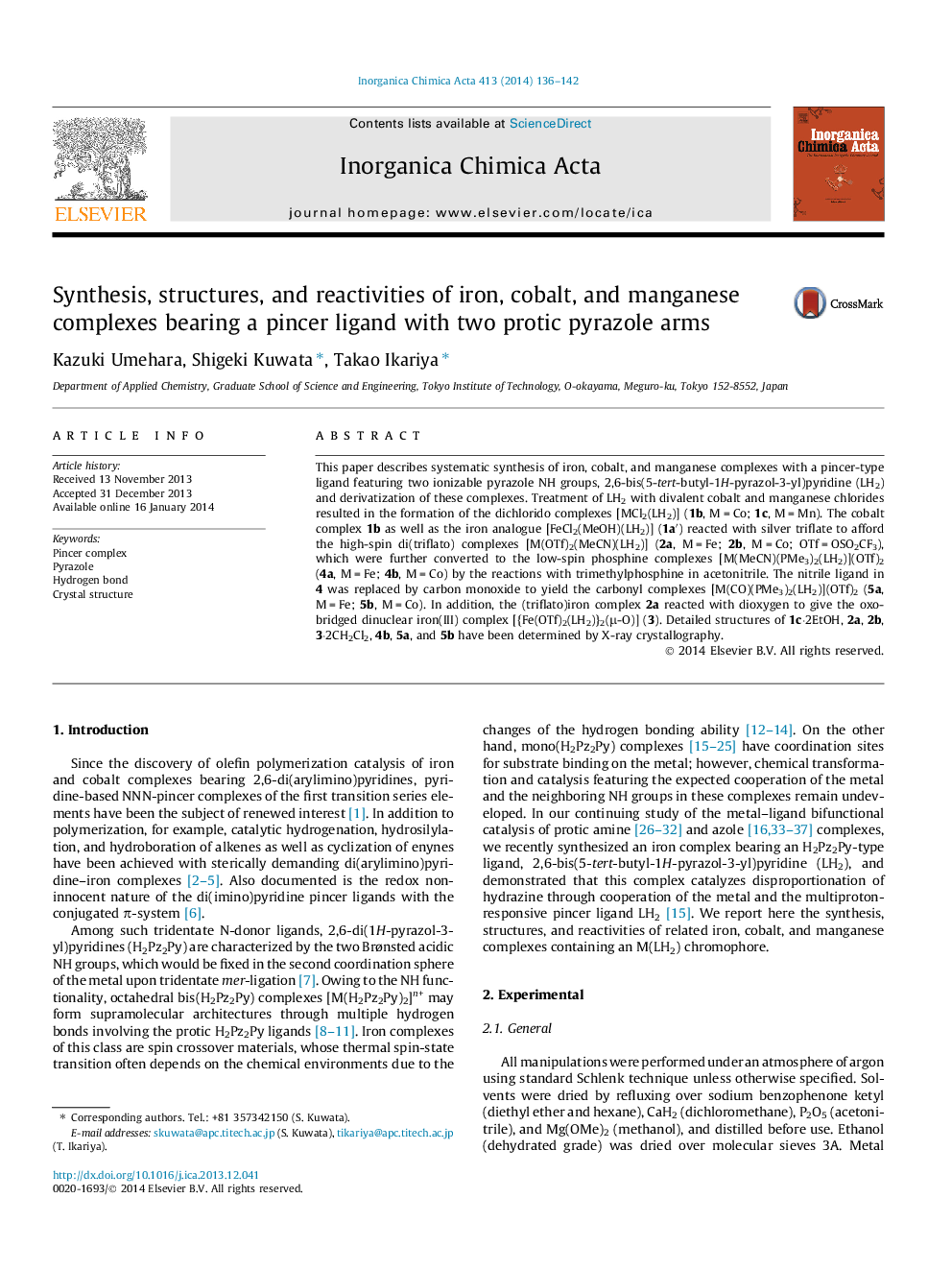| Article ID | Journal | Published Year | Pages | File Type |
|---|---|---|---|---|
| 1312227 | Inorganica Chimica Acta | 2014 | 7 Pages |
•A series of protic pincer-type complexes of iron, cobalt, and manganese have been synthesized.•The NH groups in the pincer ligand serve as hydrogen-bond donors in the crystal.•The spin state depends on the coligands.
This paper describes systematic synthesis of iron, cobalt, and manganese complexes with a pincer-type ligand featuring two ionizable pyrazole NH groups, 2,6-bis(5-tert-butyl-1H-pyrazol-3-yl)pyridine (LH2) and derivatization of these complexes. Treatment of LH2 with divalent cobalt and manganese chlorides resulted in the formation of the dichlorido complexes [MCl2(LH2)] (1b, M = Co; 1c, M = Mn). The cobalt complex 1b as well as the iron analogue [FeCl2(MeOH)(LH2)] (1a′) reacted with silver triflate to afford the high-spin di(triflato) complexes [M(OTf)2(MeCN)(LH2)] (2a, M = Fe; 2b, M = Co; OTf = OSO2CF3), which were further converted to the low-spin phosphine complexes [M(MeCN)(PMe3)2(LH2)](OTf)2 (4a, M = Fe; 4b, M = Co) by the reactions with trimethylphosphine in acetonitrile. The nitrile ligand in 4 was replaced by carbon monoxide to yield the carbonyl complexes [M(CO)(PMe3)2(LH2)](OTf)2 (5a, M = Fe; 5b, M = Co). In addition, the (triflato)iron complex 2a reacted with dioxygen to give the oxo-bridged dinuclear iron(III) complex [{Fe(OTf)2(LH2)}2(μ-O)] (3). Detailed structures of 1c·2EtOH, 2a, 2b, 3·2CH2Cl2, 4b, 5a, and 5b have been determined by X-ray crystallography.
Graphical abstractA series of iron, cobalt and manganese complexes bearing a protic bis(pyrazole)pyridine ligand have been prepared and structurally characterized.Figure optionsDownload full-size imageDownload as PowerPoint slide
